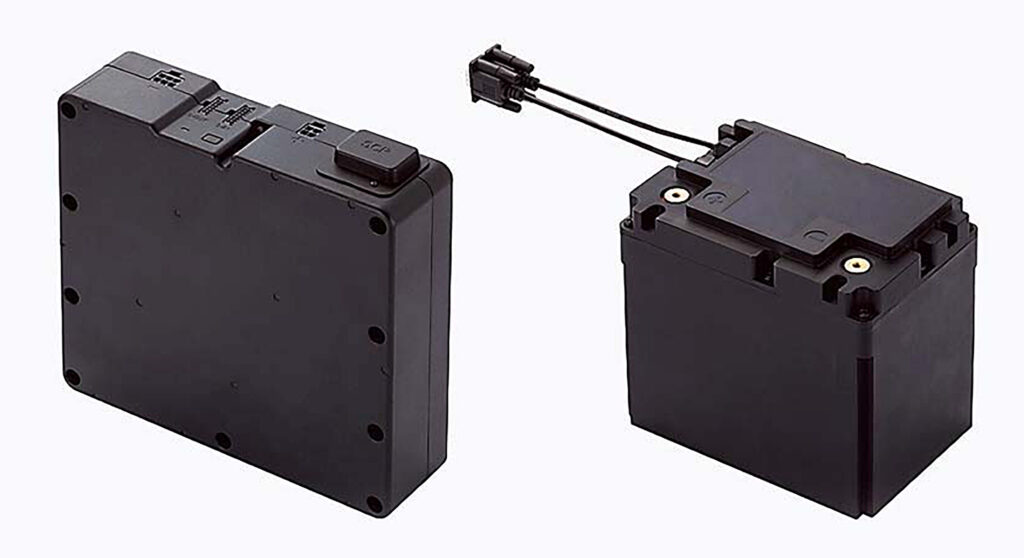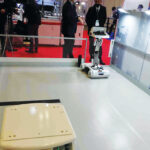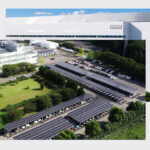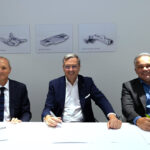ASIA ELECTRONICS INDUSTRYYOUR WINDOW TO SMART MANUFACTURING
Murata’s Unique 24V Battery Modules Power AGVs, AMRs
Murata Manufacturing Co., Ltd. is propelling the sales of 24V battery modules that employ its original FORTELION lithium-ion batteries. Accordingly, the lineup enables the company meets the demand for battery modules for industrial equipment that requires high output power and high safety. This includes automated guided vehicles (AGVs), autonomous mobile robots (AMRs), service robots, security robots, and electric forklift trucks.
The FORTELION lithium-ion batteries have a cathode composed of olivine-type lithium ion phosphate. Hence, they are difficult to ignite even if applying a large shock or pressure. They exhibit stable battery function even under high load.
Moreover, the FORTELION lithium-ion batteries achieve more than 10,000 charge-discharge cycles and enable long-term use. Promoting these characteristics of the battery, Murata will first expand sales of the battery modules to industrial equipment manufacturers in Japan and countries in Europe.

In Japan, the company partners with Restar Electronics Corporation, which has been handling its battery-related products for many years. Furthermore, in Europe, the company entered a partnership with a trading company strong in the European market, putting in place a solid support system from the introduction of products to after-follow service. The company accelerates the cultivation of customers.
High Performance, Highly Reliable
Accordingly, the FORTELION24V battery module is available in two types: all-in-one type equipped with a battery management unit (BMU) (195×132×180mm) and separate type with a separate BMU (259×71×245m).
Murata started mass production of the all-in-one type in April 2020. In addition, it is the same size as a lead acid battery, facilitating replacement from lead acid batteries. The company has been mass-producing the separate type since 2018. It is a thin battery module with a thickness of 71mm and suits low-profile AGVs and AMRs.
Normally, AGVs, AMRs, service robots, and electric forklift trucks with power supply system constituting multiple of 24V need to connect two 12V lead acid batteries in series. However, only one all-in-one type 24V battery module is enough.
Particularly, the cathode material of cylindrical olivine-type lithium-ion iron phosphate rechargeable batteries used in the 24V battery modules has an olivine structure wherein phosphorus and oxygen strongly bond. It does not discharge oxygen and the structure does not collapse. Hence, the 24V battery modules are thermally stable and ensure high safety without thermal runaway (ignition) due to overcharge and internal short circuiting.
Even after more than 10,000 charge-discharge cycles, capacity deterioration of the batteries is very slow, allowing long-term use over 15 years. Furthermore, they self-discharge of several percent per year, which is very small compared with lead acid batteries.
It is possible to charge the batteries up to 90 percent of their capacity in about an hour. Thus, they can be charged during the stand-by time of equipment.
Bears Proprietary Processing
Murata has leveraged know-how it has nurtured in the production of batteries for personal computers and mobile phones. Combined with the company’s original arithmetic processing technology, the batteries allow users to check the remaining capacity in 1 percent increment and recognize accurate timing for charge.
Furthermore, the batteries are immune to the effects of voltage and enable long-hour use. Unlike nickel-cadmium batteries, they are free from memory effect. To illustrate, this causes the battery’s usable time shorter than its actual remaining capacity after repeated shallow charging.
The 24V battery modules have achieved the IP54 dustproof and waterproof level and are usable outdoors. They have also obtained UL2271 certification required for the safety of batteries for light vehicles.
Moreover, they use a cathode using iron as a main component, reducing restrictions of resources. They are cobalt-free and are friendly to environment.




